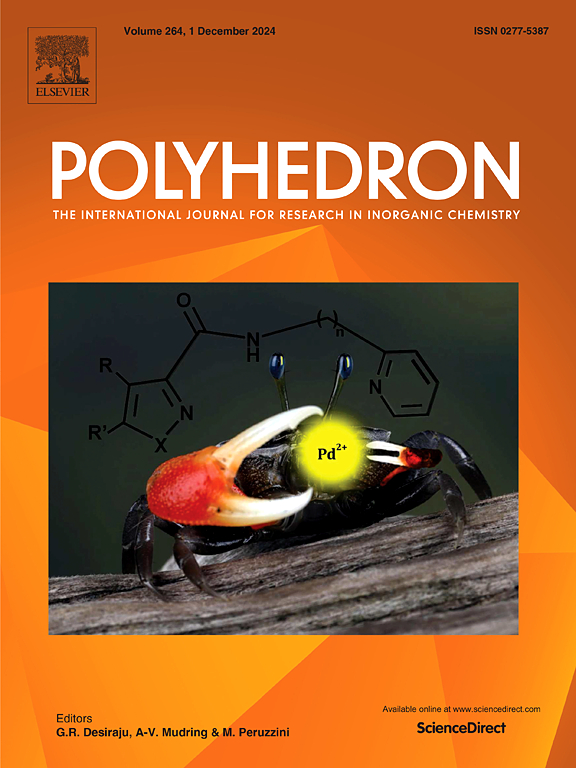A new route to air-stable Cu(0) nanoparticles
IF 2.4
3区 化学
Q2 CHEMISTRY, INORGANIC & NUCLEAR
引用次数: 0
Abstract
Cu nanoparticles (NPs) can offer plasmonic properties in the near infrared region of the electromagnetic spectrum while boasting substantially greater abundance than group 11 counterparts Au or Ag and reduced cytotoxicity compared to the latter. To maintain plasmonic responsiveness, the NPs metallic character must be conserved, meaning resistance to environmental oxidation is required. Core@shell Cu@Fe3O4 NPs are synthesized here by decomposing Fe(CO)5 onto preformed Cu seeds made in the presence of oleic acid (OA) and oleylamine (OAm). Variation of the OA:OAm ratio induces seeds to transition from pseudospheres to cubes and then rods. Facile coating succeeds irrespective of seed morphology and is proved for non-magnetic seeds for, as far as we know, the first time. Imaging reveals a continuous, ∼2.5 nm wide Fe3O4 shell encapsulating Cu in each morphology. Samples can be redispersed in undried organic media or stored under air as solids for many months without core oxidation, and this is attributed to the coating of the Cu core with an uninterrupted magnetite shell. Treatment with meso-2,3-dimercaptosuccinic acid results in surface ligand exchange without morphological changes. The resulting Cu@Fe3O4 NPs can then be dispersed in polar organic solvents or water.

求助全文
约1分钟内获得全文
求助全文
来源期刊

Polyhedron
化学-晶体学
CiteScore
4.90
自引率
7.70%
发文量
515
审稿时长
2 months
期刊介绍:
Polyhedron publishes original, fundamental, experimental and theoretical work of the highest quality in all the major areas of inorganic chemistry. This includes synthetic chemistry, coordination chemistry, organometallic chemistry, bioinorganic chemistry, and solid-state and materials chemistry.
Papers should be significant pieces of work, and all new compounds must be appropriately characterized. The inclusion of single-crystal X-ray structural data is strongly encouraged, but papers reporting only the X-ray structure determination of a single compound will usually not be considered. Papers on solid-state or materials chemistry will be expected to have a significant molecular chemistry component (such as the synthesis and characterization of the molecular precursors and/or a systematic study of the use of different precursors or reaction conditions) or demonstrate a cutting-edge application (for example inorganic materials for energy applications). Papers dealing only with stability constants are not considered.
 求助内容:
求助内容: 应助结果提醒方式:
应助结果提醒方式:


